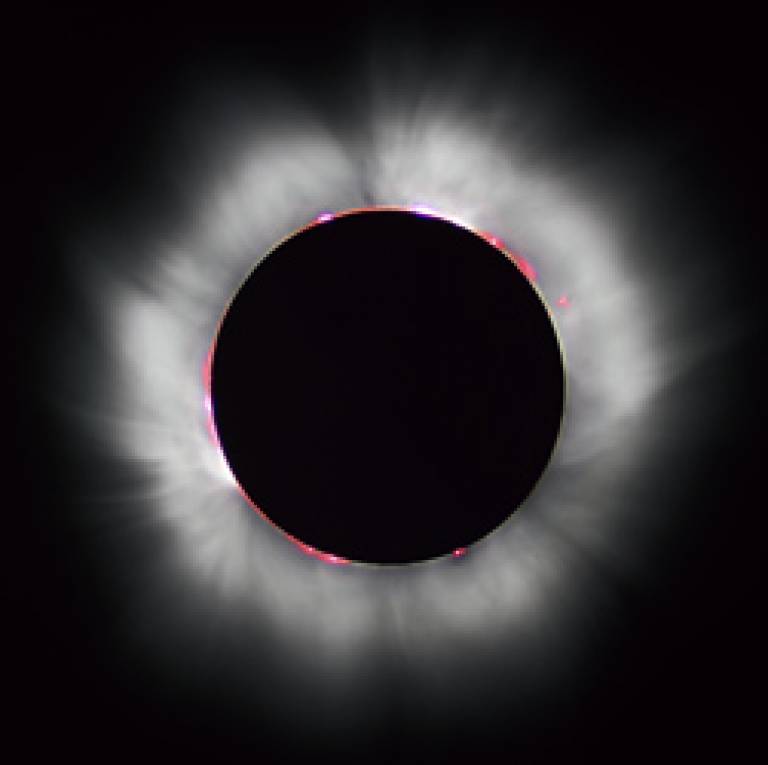The Sun's magnetic fountains
3 April 2008
Links:
 mssl.ucl.ac.uk/" target="_self">UCL MSSL
mssl.ucl.ac.uk/" target="_self">UCL MSSL
A team from the UCL Mullard Space Science Laboratory (MSSL) have found the origin and driver of the huge fountains of hot gas that spout from the Sun, using the UCL-built instrument on board Hinode, the solar satellite observatory.
Dr Michelle Murray (UCL Mullard Space Science Laboratory) presented the latest findings at the Royal Astronomical Society National Astronomy Meeting in Belfast on 2 April 2008, together with computer simulations that model conditions on the Sun.
Astronomers have known for decades that the Sun has a very dynamic atmosphere. Huge fountains of hot gas erupt in the atmosphere, or corona, every few minutes, travelling at tens of thousands of km per hour and reaching great heights.
The team, led by Dr Murray, have used the Hinode spacecraft to find the origin and driver of these fountains - immense magnetic structures that thread through the solar atmosphere.
Since its launch in October 2006, scientists have been using Hinode to examine the solar atmosphere in extraordinary detail. One of the instruments on the space observatory, the Extreme Ultraviolet Imaging Spectrometer (EIS) built by a consortium led by UCL MSSL, generates images of the Sun and gives information on how fast its gases are moving.
Increases in pressure at the base of the Sun's magnetic field cause enormous jets of hot gas to shoot upwards into the solar atmosphere. Once the pressure ceases, the hot gases stop soaring into the atmosphere and fall back towards the solar surface. The changes in pressure are caused by rearrangements of the Sun's magnetic field, a continual process that results in looping cycles of increasing and decreasing pressure and, consequentially, intermittent solar fountains.
"EIS has observed the Sun's fountains in unprecedented detail and it has enabled us to narrow down the fountains' origins for the first time," said team member and UCL MSSL postgraduate student, Deb Baker. "We have also been able to find what drives the fountains by using computer experiments to replicate solar conditions."
Dr Murray added: "The computer experiments demonstrate that when a new section of magnetic field pushes through the solar surface it generates a continual cycle of fountains, but new magnetic fields are constantly emerging across the whole of the solar surface and so our results can explain a whole multitude of fountains that have been observed with Hinode."
To find out more, use the link at the top of this article
Image: During a total solar eclipse, the Moon passes in front of the Sun, blocking out the most intense solar light and allowing us to view the Sun's atmosphere, or corona, from Earth. The Sun's light can be seen streaming through the immense magnetic structures that thread through the corona and stretch out into space (credit: Luc Viatour GFDL/CC)
 Close
Close

